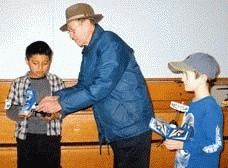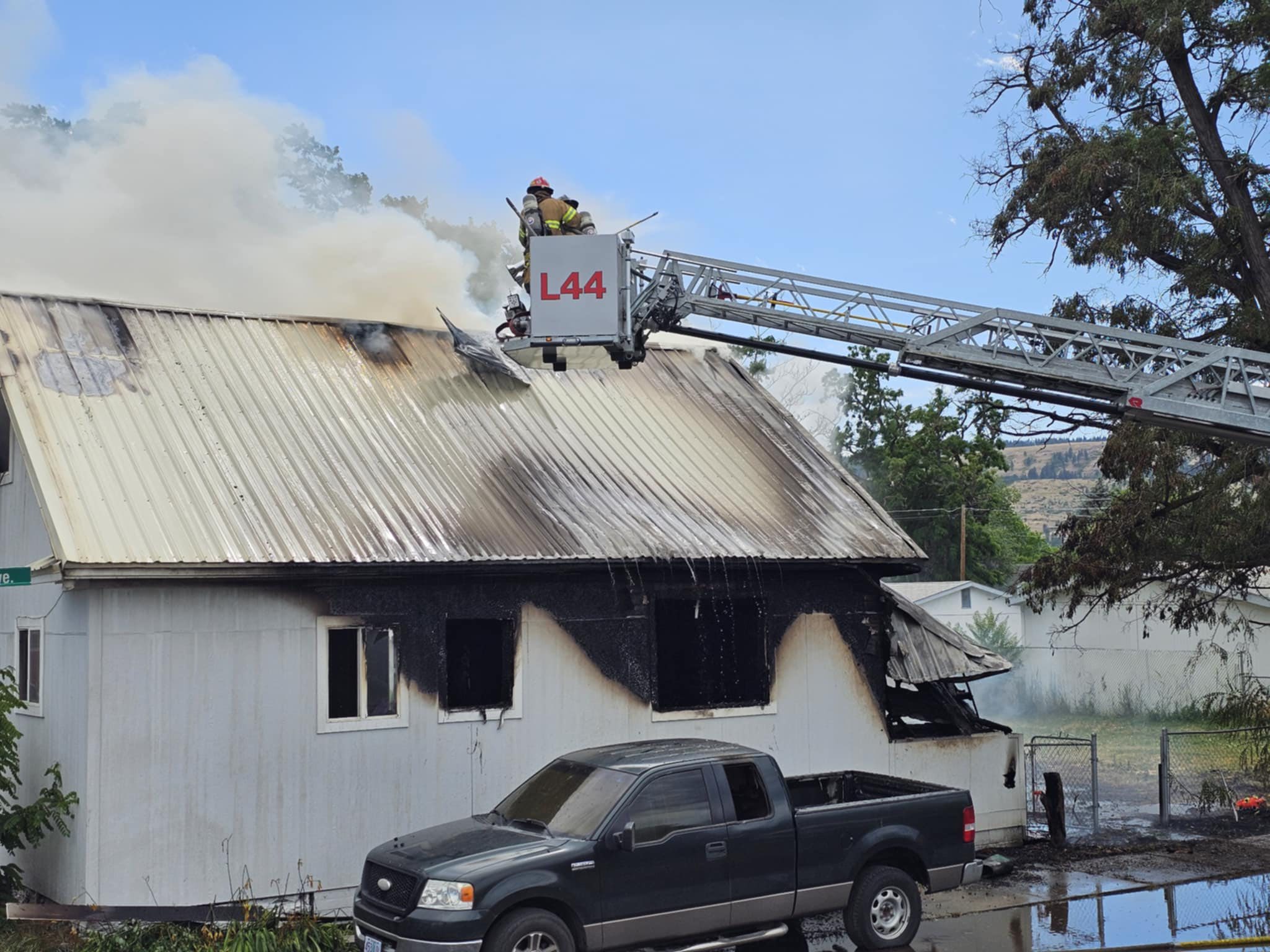PILOTS TAKE FLIGHT AT RIVERIA AIRPORT
Published 12:00 am Friday, February 24, 2006

- Wayne Eshelman of Cove gives a flying tip to his grandson Sergio Morris while Taylor Neustel looks on. ().
Story and photos by
Dick Mason
The Observer
It sounds like an air traffic controller’s nightmare.
Helicopters and airplanes, none of which have flight plans, taking off, flying and landing within 30 feet of each other. Planes making crash landings at least once an hour.
Chaos, though, does not reign here. Instead, skilled pilots with a lifelong passion for aviation do.
Welcome to La Grande’s public indoor airport, the Riveria Activity Center gym.
In the spring, summer and fall, the Grande Ronde Bush Pilots fly outdoors at Courtright Field next to the Ladd Marsh Wildlife Area.
Every other Monday night from November to March, however, the action moves indoors as the Bush Pilots meet in the Riveria gym to fly electric radio-controlled airplanes and helicopters.
"It’s very calming after a day at work,” said Dan Clemens of the Bush Pilots.
Clemens also enjoys the sense of camaraderie that is apparent among the flyers.
"It gives us a good excuse to get together and talk about what we are passionate about,” he said.
George Gilchrist of the Bush Pilots said the indoor sessions give the La Grande man a chance to keep his skills sharp in the winter. Opportunities to fly radio-controlled planes and helicopters in the winter are limited because of inclement weather. Cold, for example, robs a pilot’s fingers of the dexterity
needed to fly.
Still, flying indoors presents special challenges. One has a smaller margin for error since more frequent adjustments must be made indoors.
"You have to be right on the button (indoors)," Gilchrist said. "It takes more skill to fly a fixed-wing plane indoors.”
Gilchrist noted when outdoors a pilot usually has plenty time to make a correction. Not so in the Riveria gym.
"If you don’t execute a proper turn, you’ll run into the side of the gym,” Gilchrist said.
The gym’s barriers may restrict flight, but they are also a plus.
"When you are flying outdoors, there is the danger of the plane flying out of sight,” Gilchrist said. "They can still be in radio range but farther away than you can see.”
Another indoor plus is that smaller and lighter aircraft can be flown. These can be extremely difficult to fly in wind. A Styrofoam plane flown at Riveria Monday is a good example. Such a plane would be almost impossible to fly in windy weather.
Regardless of where radio-controlled aircraft are flown, helicopters are harder to operate.
"Helicopters are like an upside down lawn mower. You don’t know where they are going to go,” Gilchrist said. "It’s like they’re trying to tear themselves apart.”
Clemens agrees that helicopters are exceptionally difficult to fly.
"Flying a helicopter is like balancing a pingpong ball on a beach ball,” he said.
Clemens was earlier a helicopter crew chief in the National Guard.
Operating a radio-controlled helicopter requires constant focus. A split second distraction can cause an operator’s helicopter to crash.
"They don’t give you any space (for concentration lapses),” Gilchrist said.
Airplanes, by comparison, provide more margin of error because they can take advantage of aerodynamics to stay aloft. For example, a plane will stay aloft longer if its power is cut off since it will glide, something a helicopter can’t do.
"Helicopters fly based on aerodynamic principles, but they have no aerodynamics (to help them if they lose power),” Gilchrist said.
The planes flown indoors have a slight whining mosquito-type sound. They are quiet because they are electrically powered.
A critical thing flyers do at each session is indicate the radio frequency they will use to operate their aircraft. It is important that no two flyers use the same frequency, Gilchrist said. Should a plane or helicopter begin receiving radio signals of the same frequency from two sources, its engine will shut down and it will crash.
Crashes do not harm the Riveria gym floor because the planes and helicopters are so light.
The club has been flying indoors the past two winters. Last winter its members flew in the National Guard Armory at the Blue Mountain Conference Center.
The public is welcome to watch their sessions. Flyers need not be members of the Bush Pilots, but they must be members of the Academy of Model Aeronautics because of insurance purposes.
The organization is easy to join. For information call Gilchrist at 963-5270.
Gilchrist believes that the Bush Pilots will continue to fly at the Riveria Activity Center gym for many winters to come.
"We do love our model airplanes. We’re all diehard pilots.”








